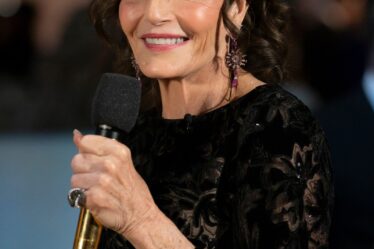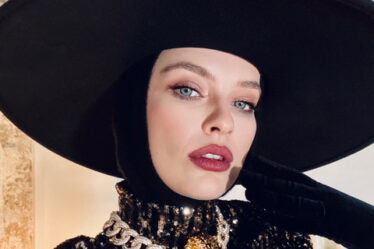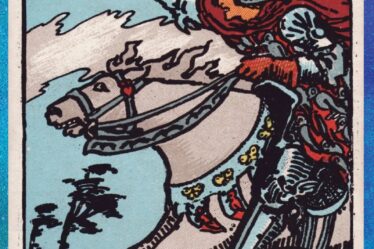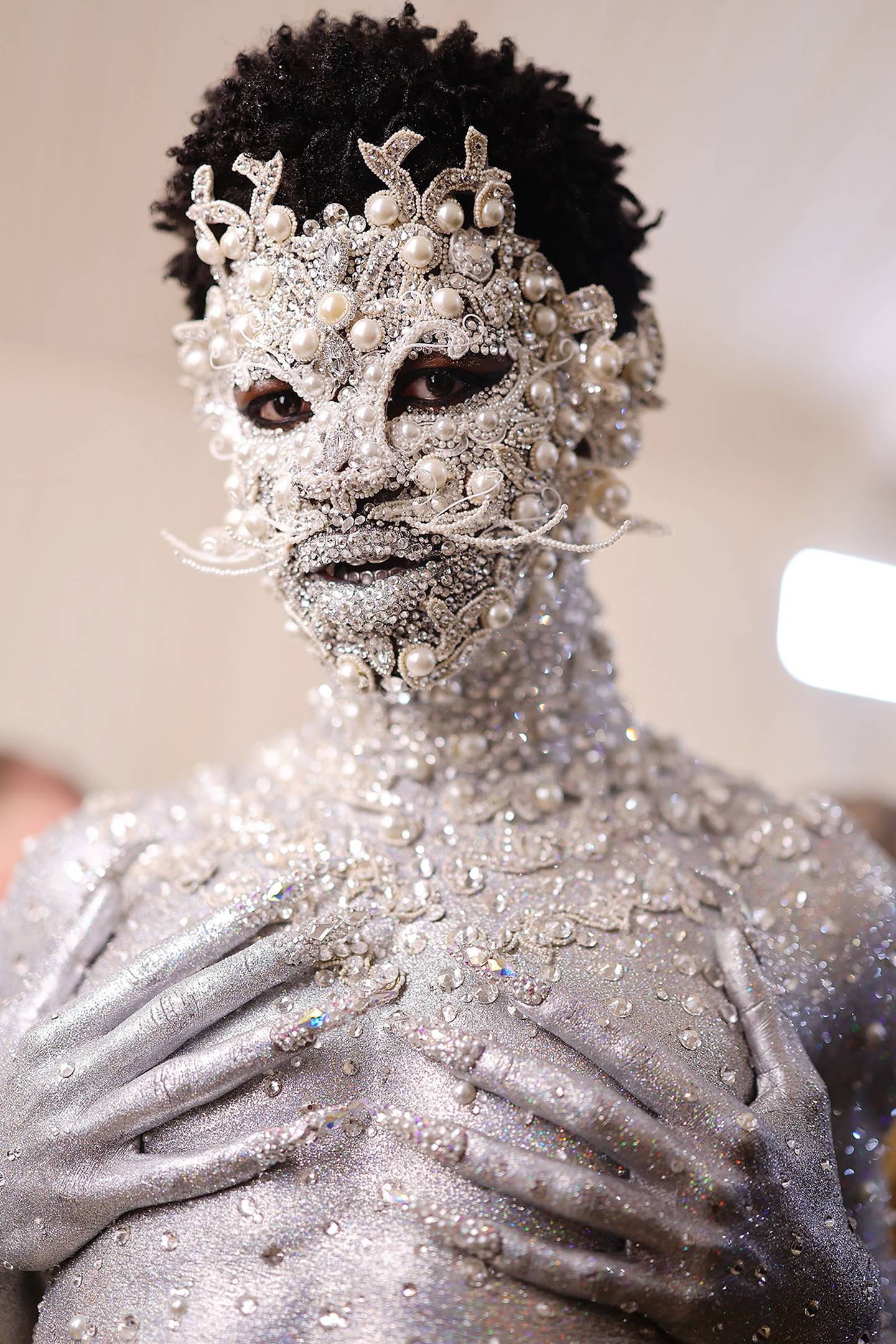
Three years after Giovanna Engelbert joined Swarovski as its first-ever creative director, the fashion editor-turned-designer’s creative revamp of the 128-year-old Austrian crystal maker’s consumer business is gaining momentum.
So far this year, Swarovski has been involved with three of fashion’s most viral moments. In January, makeup G.O.A.T. Pat McGrath affixed 30,0000 Swarovski crystals to pop singer Doja Cat’s red-painted body for the Schiaparelli haute couture show. The following month, Swarovski teamed up with Paris designers Egonlab to create a harlequin crystal romper for singer Harry Styles at the Grammy Awards. And in May, McGrath again used Swarovski materials to supply one of the night’s most outrageous looks on the Met Gala red carpet: a crystal-and-pearl cat mask for a silver body-painted Lil Nas X, inspired by Karl Lagerfeld’s pet Choupette.
Now Engelbert is aiming to reinforce Swarovski’s renewed fashion buzz with a global campaign lensed by Steven Meisel, the photography legend who has shot more than 400 covers for Vogue. Conceived again in partnership with McGrath, the advertisements feature women bedazzled in crystal makeup on their eyes and lips, anamorphically styled to resemble their Swarovski statement jewels depicting cockatoos, turtles and butterflies.
The idea was for “the jewellery to become the woman and the woman to become the jewellery,” Engelbert said.
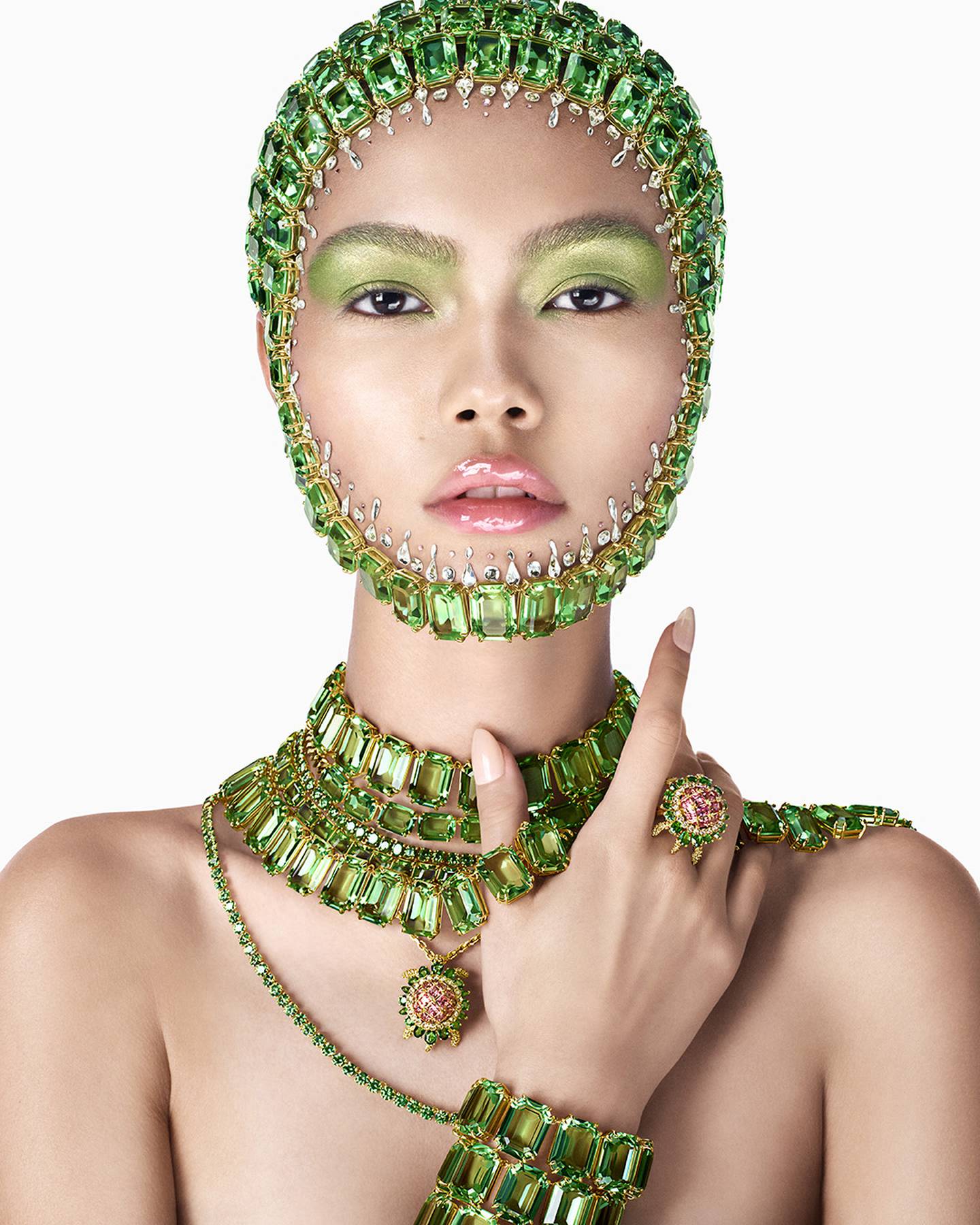
Swarovski is not new to projecting a luxury image through flights of fancy in its campaigns: the company’s ads have previously included Karlie Kloss in a cloud of butterflies or Miranda Kerr peeking out from behind crystal flowers. But under Engelbert, both the brand’s artisanal creations and commercial pieces have evolved significantly.
Instead of relying heavily on small white crystals (serving more or less as substitutes for white diamonds), Engelbert has taken to draping models in chunky, colourful necklaces that make no secret of the fact they’re made of glass. In the Miesel campaign, fantasy is combined with wearable products, like the stack of crystal chokers à la Anna Wintour sported by a model coated in green crystals like a turtle. The crystal rivières—Swarovski calls the range Millenia—have quickly become a hero product.
“We try to push the fantasy, but still make it understandable and readable,” Engelbert said. “The idea is to be extravagant in a very special way—to position [the brand] where ‘extra’ and elegance meet.”
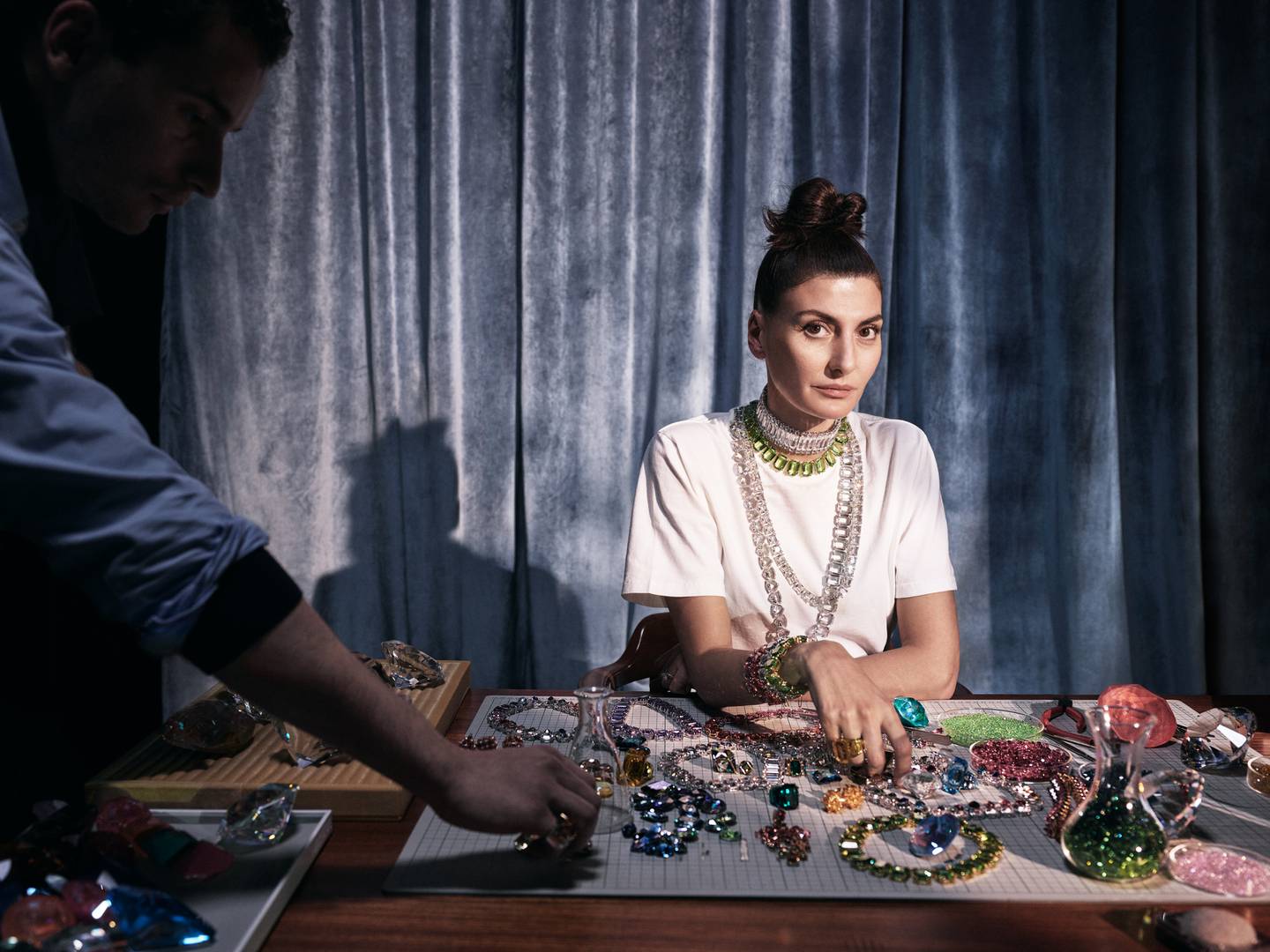
Few things could seem more obvious than selling big, colourful crystal necklaces for the world’s biggest crystal maker: It’s the kind of piece a glass-cutting expert can afford to sell for around $500, but would likely cost tens of thousands in amethyst or blue topaz.
Still, Swarovski’s shift toward larger, coloured crystals represents a significant push upmarket, and required major adaptations in its supply chain for a company that has historically relied heavily on dainty, entry-price pieces in its jewellery range.
Swarovski has had to adapt, however, as younger generations snubbed the less-fashionable previous range in its gifting-focused stores (particularly since the pandemic) and as the trade in little white crystals lost its sparkle amid rising competition from lab-grown stones. In recent years, top luxury brands like Cartier and Tiffany have also managed to convince more customers than ever to trade up to branded fine jewellery.
Engelbert was a model before landing a job as a fashion editor at Vogue Italia, where she became an early street style influencer, regularly photographed by figures like The Sartorialist alongside her mentor Anna Dello Russo. She went on to work as a freelance stylist and creative director, consulting for Swarovski on its program of fashion collaborations for several years before landing the gig as the family-owned brand’s first creative director in 2020.
Her experience and connections in fashion have come in handy as she revamped Swarovski’s approach to collaborations as well as its collections. In recent years, the brand has focused less on subsidising crystal materials for buzzy brands in exchange for being name-checked in their product descriptions. While the company says it will continue to support small designers, it’s become more interested in staging high-impact moments like the recent McGrath collaborations, which put the creative possibilities of crystal front-and-centre.
Swarovski’s business is beginning to respond to the shift: While turnover is still off by over €800 million from 2019′s pre-pandemic levels, the company appears to be headed back to solid ground: The company suspended its redundancy program and rolled-out a new strategy focused on higher-end products and jewellery under a new CEO, Alexis Nasard, who took over from members of the Swarovski family last year. Revenues grew 10 percent year-on-year to €1.83 billion in 2022, with profitability close to break-even after three years of significant losses.
Nasard cited the exuberant style of higher-end pieces like Engelbert’s Millenia range, or her multi-coloured Gema chains as driving growth in recent months, as well as a more maximalist store concept the brand has rolled out in some locations under her creative direction.
“We are repositioning the entire brand around joyful extravagance,” Nasard said. “The early results are quite encouraging.”
The new pieces have boosted the brand’s appeal among women who buy jewellery for themselves—a trend often called “self-gifting” that has become a transformational force for the hard luxury industry in recent years, he said.
As part of its new strategy (called “LuxIgnite”) Swarovski is also working to ramp up its business in lab-created diamonds—where it hopes combining manufacturing know-how with big-name credibility can help it to pull ahead in a fast-moving, hyper-competitive space.
Swarovski, which continues to sell $85 rings and $55 ballpoint pens—still has a long way to go before it could fall squarely in the luxury category. But the white space between Swarovski and global luxury brands could also be seen as an opportunity. Even its most eye-catching items, like the $500 cockatoo rings and turtle pendants in the Miesel campaign, are priced at around one-sixth the price of an entry-priced option with coloured stones from Cartier. The brand still has lots of room to elevate its business before putting itself in direct competition with luxury heavy-hitters.
Engelbert feels the brand has found a sweet-spot by combining expressive designs and accessible prices.
“The exciting part is the democratisation of creativity and quality,” Engelbert said. “I have friends who buy high jewellery and then use Swarovski as a statement piece, and then there are others who, for them, Swarovski is an investment piece. That makes me so happy.”

